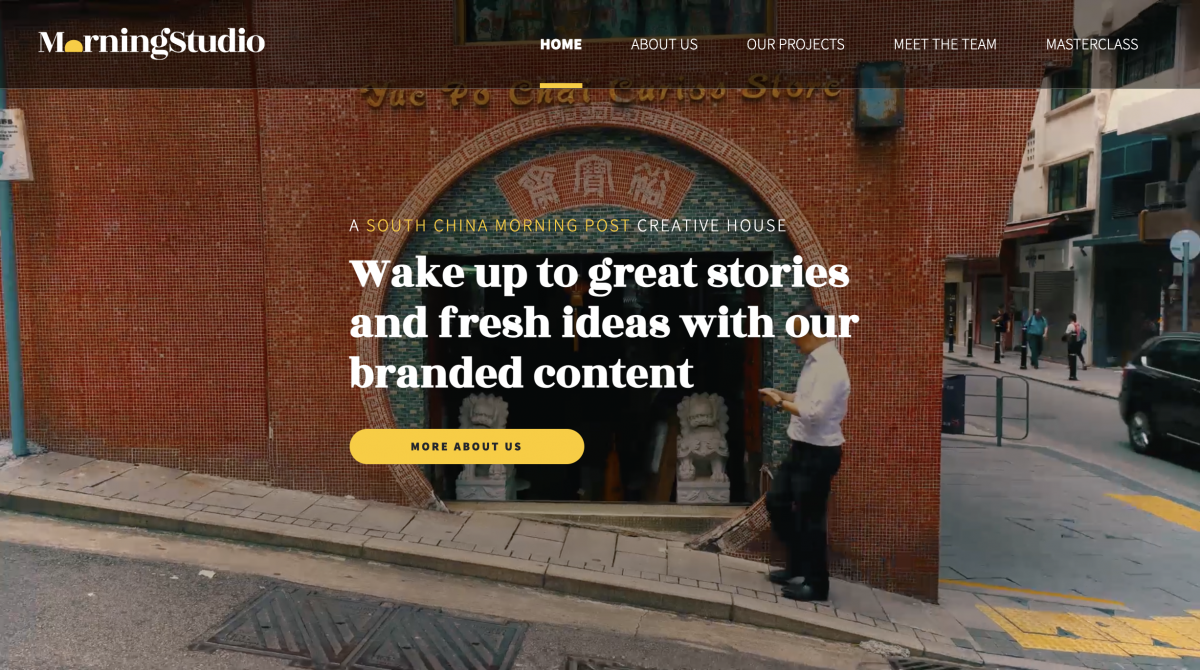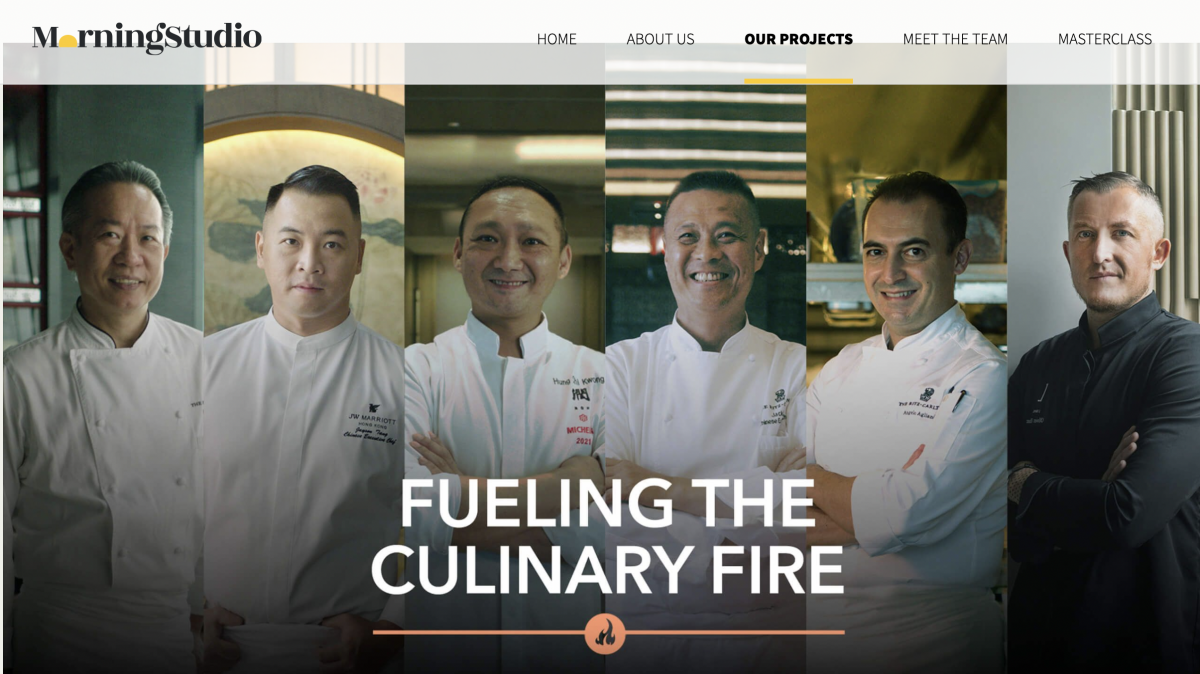Michala Sabnani: The media executive behind Equanimity Podcast and the innovations of South China Morning Post’s Morning Studio
Michala Sabnani is a media executive with over 12 years of experience in the media industry. She began her career working in television broadcasting at the Asia headquarters of CNN in Hong Kong. There, she quickly identified her passion for storytelling, which led her to become a producer crafting stories and documentaries for the celebrity talk show, “Talk Asia.” She’s done features on Anna Wintour, Ed Sheeran, and Elon Musk — among others.
Soon after, she was recruited by the South China Morning Post (SCMP). After being acquired by Alibaba, the SCMP transitioned from a local paper in Hong Kong to a global publisher with a mission to elevate the conversation about Asia and China. Sabnani was recruited to start a creative agency within SCMP, called Morning Studio, which has transformed into a team of 30 that has completed over 100 campaigns in four years.
From there, Sabnani has continued creating content on behalf of other individuals and organizations, ultimately inspiring her to begin her own personal project: a podcast called Equanimity. As someone who has been in media for over a decade, Sabnani’s purpose for Equanimity is to use her own voice and platform to develop her personal brand.
“It was important to see what my own voice was. As someone who’s been in this space for so long, if I was to say something, what would it be? That voice is what I’m curating and learning how to use through Equanimity.”
Michala Sabnani
Equanimity is not affiliated with any news brand. It’s entirely a passion project for Sabnani to give back to her community and to use her experience in a way that positively impacts her home.
Storybench spoke with Sabnani to find out more about Equanimity, podcasting, and a modern career in Media.
What is Equanimity?
MS: It’s really a personal project. It’s my voice and how I’m viewing and interpreting the world and topics that I find interesting, topics that I’m battling with and I’m sort of bringing to the forefront and curating a conversation around that.
Equanimity is a byproduct of all my thoughts, opinions, and my take on things: from my experience living in Hong Kong, going through Covid in Hong Kong, and being a South Asian female. Being an American Asian and bringing all those things together to communicate how I’m viewing the world and how the people who I interact with are viewing the world.
So, that’s kind of Equanimity, it’s very biased to my persona and the people in my inner circles and the world that I’m interacting with.
What is your process for finding someone for your podcast?
MS: I want to say it’s a gut feeling.
I think the first thing that we really want is to understand: does this person inspire us? Does their story in some way, shape, or form bring inspiration?
The second thing is, can we measure their impact? It might not be a giant world impact, or do we feel that impact in some way, shape, or form?
The third is, are they breaking a template of sorts? I think that a big part of the Equanimity narrative is that who we are (Indian, Indian Americans, Sindhi, living in Asia) is possibly a template that has been given to or fed to us. It’s really important for me that Equanimity, the podcast, is showing how we can live a good life, a moral life, one that our parents can be proud of, but perhaps, there are many different types of templates to do that. We want to find guests that are speaking to that as well.
And finally, it’s all about understanding that everything that we go through, whether it be fear, grief, love, failure, trying to figure out fate, trying to figure out who you are, an identity; all of these pillars are not unique. They’re very universal. Everyone is trying to figure it out, and we’re just trying to find cool stories and interesting perspectives to make you reflect on these universal themes.
Listen to Equanimity here:
How do you compete with other podcasts that are able to advertise on TikTok?
MS: It’s basically not a competition because, in the content world, there are enough people to consume all sorts of content. The number of hours that people are consuming content is only increasing. It’s not a zero-sum game. I think that the key in this day and age when creating any sort of content is understanding who you are creating it for and making sure that you’re reaching that specific target audience.
Defining the type of persona that you’re trying to reach is really important because we’ve entered a stage in the internet where everyone’s version of the internet — and everyone’s version of how they consume content – is so individual to them. We’re in the age of hyper-personalization.
Every app, every website, every algorithm is personalized to you and your preferences. So, I need to make sure that I am curating and coming up with content that is personalized to the people that I want to reach. That’s more important than looking at what other people are doing. It’s about understanding what I want to say and who do I want to say it to.
How is SCMP Innovative?
MS: The SCMP is a bigger ballgame. I think the work that the SCMP is doing is very important in this day and age because it’s a global publisher headquartered in Asia, and it’s giving the perspective and the nuance of the world — like Asian News — from Asians. So, where a lot of global publishers are reporting about Asia, they’re based in the West. It is telling the news about this region and how this region affects policy and global affairs and economics and culture, but with the vantage point of being here.
I think that as an international news pillar, the organization — and the vision of the organization — is trying to communicate is bringing the nuance and the dialogue of the Asian perspective and elevating that conversation. You need to have different perspectives so that the modern-day reader needs to see different vantage points to understand the full picture.
What is unique about the content you create for Morning Studio?
MS: Morning Studio is an in-house creative agency. It’s not editorial news or editorial news coverage.
It’s very much a creative agency. What that means is we partner with brands or client partners who want to amplify a campaign, or a message, or something that’s important to them, and Morning Studio helps make that happen. Normal advertising agencies and digital media agencies sometimes default to the client voice and how those clients want to create their campaign assets, but we bring the storytelling, the heritage, and the values of the SCMP into that process. We’re using documentary-style storytelling and the news lens of the SCMP as pillars in an advertising creative agency way.
That marriage is what makes Morning Studio unique.

What’s been your favorite project, brand, or company that you’ve worked with?
MS: That’s a hard one. It’s been four years, and we’ve worked on some amazing projects, but recently we did a very cool campaign for the Marriott Hotel Group. It was about their Michelin restaurant, and they wanted to raise the profile of the restaurants.
We did a documentary series called Fueling the Culinary Fire, and it was all about what it takes to be a Michelin-star chef. We shadowed these amazing chefs and captured their personas, their thought process, and their journey from ordinary to excellence, then to Michelin excellence. What does it take you to go that extra mile? It was a very beautiful, strong narrative persona utilizing storytelling. I find it really powerful when you can use real people and the stories of real people to invoke empathy to get a point across.
I think that the most impactful marketing campaigns and the most impactful content is when you’re using human storytelling. The fastest way to communicate an idea from me to you is to tell you a story. There is a reason why storytelling is so effective, so my most favorite campaigns are ones that really are able to use storytelling in a very authentic way.

What’s your biggest observation of the evolution of journalism/news/media?
MS: I started my career in TV broadcast journalism, and that was probably the last couple of years that TB had the power that it does. Now, obviously, that’s translated to the next wave, which is digital journalism, which at that point, news outlets were optimized for desktops, and not the mobile experience yet. From there, digital became all these other platforms, it’s been really interesting to witness how news has translated throughout all these stages.
In my experience of being in this industry for over a decade, I’ve found that no matter the platform, the ethos of trust, and fact-checking, and truth is very important to this field. Facts, no matter how they’re presented, is the crucial role of journalism. Let’s take the earthquake in Turkey that’s happening right now. How are you reporting facts? How are you reporting figures? How are you reporting death toll? How are you reporting victim stories? How are you portraying their narratives?
It doesn’t matter if it’s coming in a TikTok video. It doesn’t matter if it’s coming from a news article, but these sort of principles of journalism and storytelling is very crucial because then, you’re getting information, but whose information? To what standards are you getting it into? I think there’s a whole new branch now of people sharing their thoughts and opinions, but it is very different. It is opinions. And that is the segue of storytelling.
As a consumer, you still need to turn to organizations who have pillars of truth. To me that’s a very important part of this transformation of media: in that storytelling is changing and the way that people are consuming facts, and consuming the news is changing. But I really hope that the base level, or the ethos, or the essence of journalism and storytelling, remains agnostic of platform.
In this omnichannel era that we’re in right now, the one thing that I hope stays consistent is – no matter what the platform is – the parameters, the ethics, the ethos, and the stringent sort of rules and of journalism remain.





